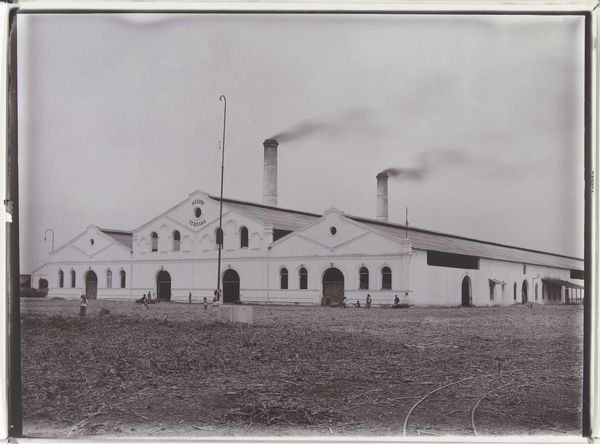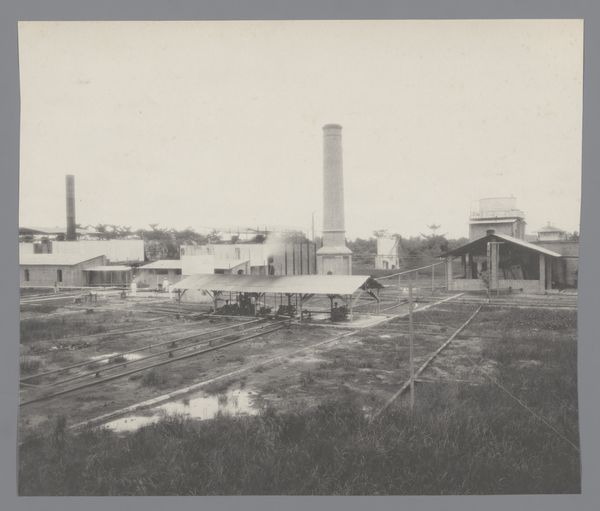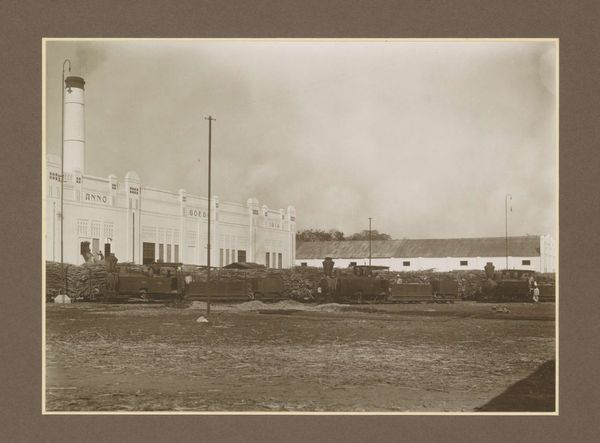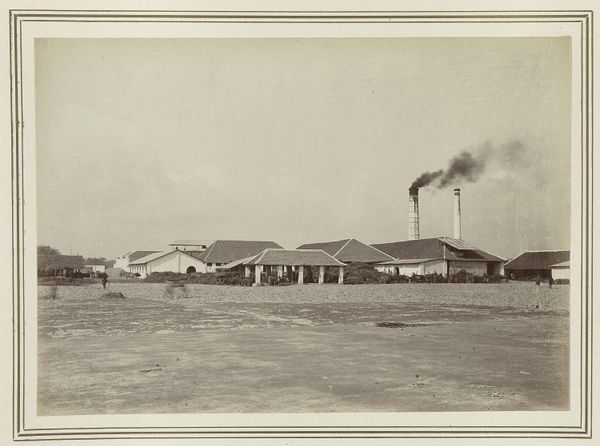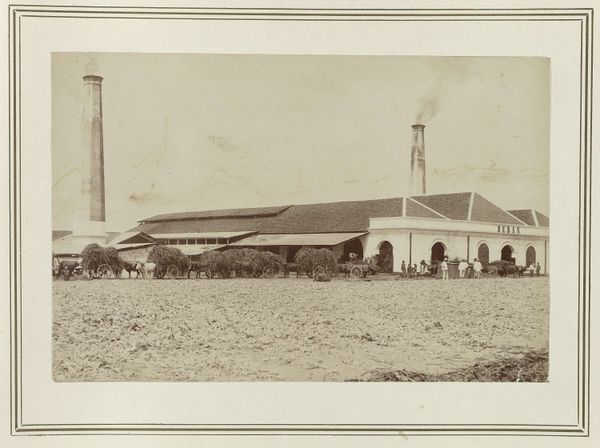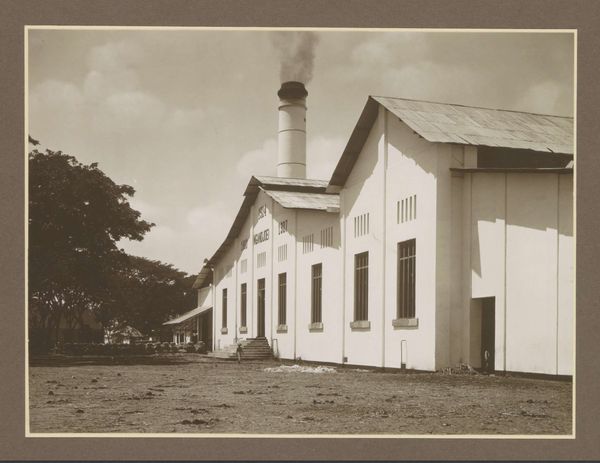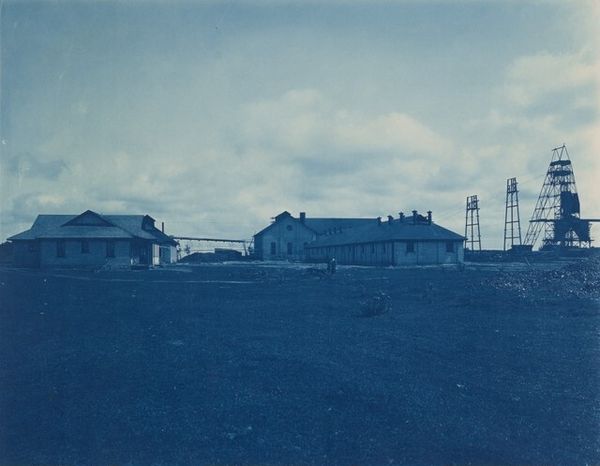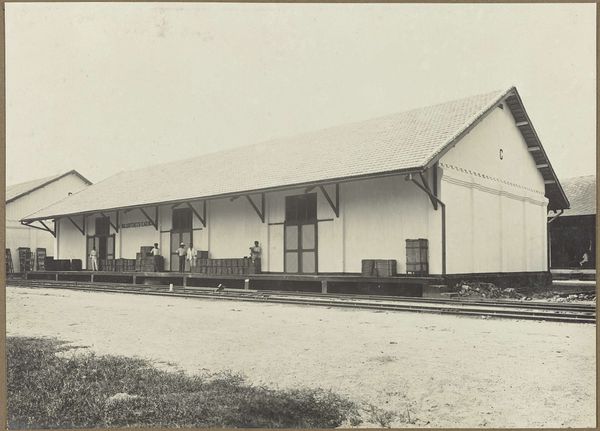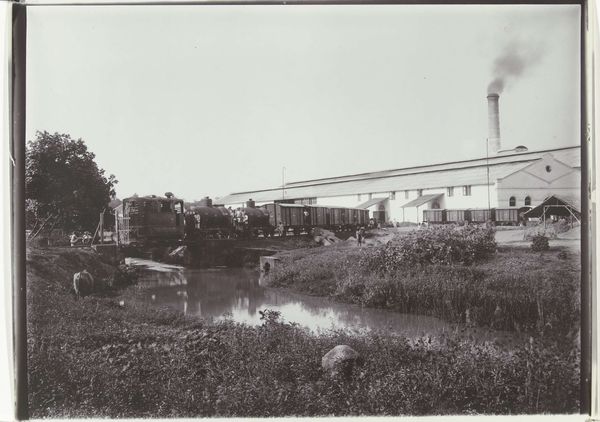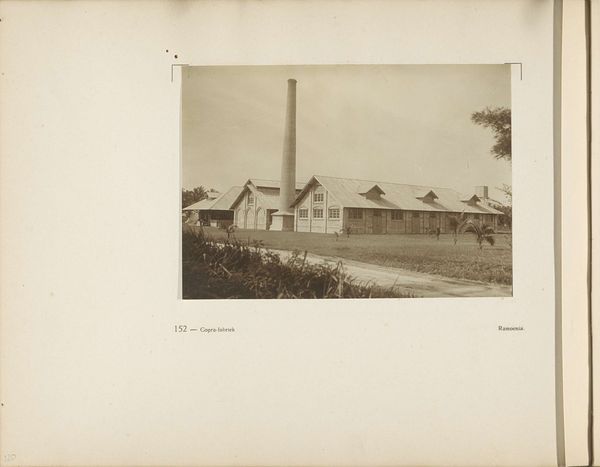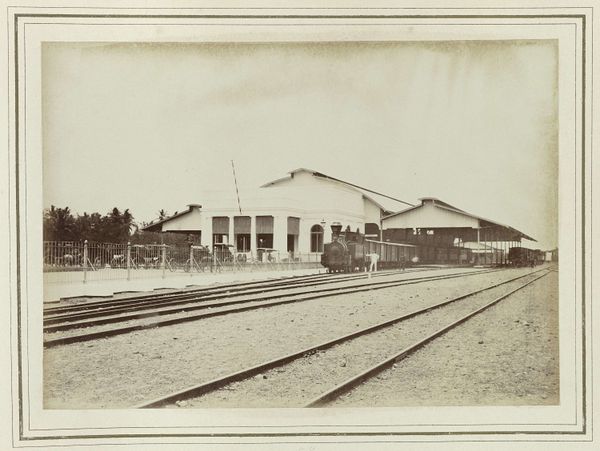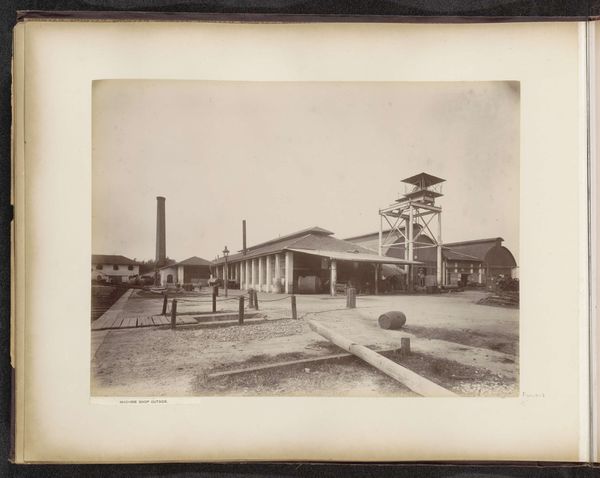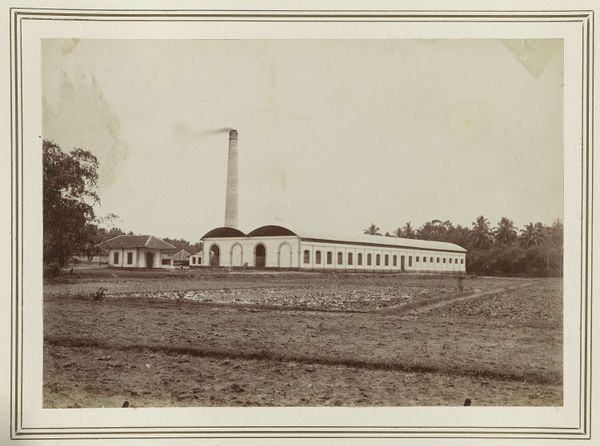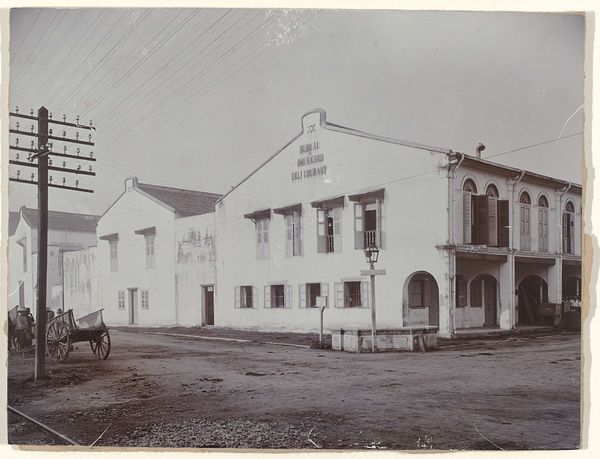
print, photography
# print
#
landscape
#
photography
#
realism
Dimensions: height 123 mm, width 173 mm
Copyright: Rijks Museum: Open Domain
Curator: This photogravure captures the Suikerfabriek Tjomal, a sugar factory, sometime in the early 1900s to 1910s. The anonymous photographer immortalized this scene in what is now present-day Indonesia, and it’s held here at the Rijksmuseum. Editor: Immediately, the factory’s architecture juxtaposed with the surrounding landscape speaks of both progress and exploitation, there's such an air of… potential energy bound up with colonial power. The monochrome flattens everything, heightening this almost spectral quality. Curator: Precisely! It's critical to understand how these industrial structures became symbols of colonial enterprise. The image encapsulates the extraction of resources and labor in former Dutch East Indies. Note how the chimney dominates the skyline—a clear signal of control, similar to church spires elsewhere. Editor: The repetitive geometric patterns in the buildings themselves suggest a rational, almost sterile imposition onto the organic landscape. Even the smokestack resembles an inverted obelisk – power turned to production, though also hinting at a loss of nature, something mourned. Curator: It's intriguing that you view it in that mournful context. I read the symbolism of the chimney somewhat differently – less about loss, and more as assertive and domineering given what it produces and provides for external economies. I’d suggest focusing on those workers at the edge of the covered loading areas – their labor visually fueling the machinery and system. Editor: And doesn't the photographer's perspective add another layer of meaning? Taken from a slightly elevated vantage point, it perhaps reflects the assumed authority over the scene. You're absolutely right to mention labor's symbolic value here – but where does that symbolism take us? Curator: Back to the idea of progress and its ambiguous consequences. The factory not only becomes a testament to technological advancements, but a cultural object signifying economic dependency and subjugation of the workers through the era’s political regime. The aestheticization of industrialization conveniently omits details. Editor: Precisely, it's an image designed for a specific audience and ideological perspective, which demands critical engagement when considered in our present context. This print holds cultural memory for many outside the colonial gaze. Curator: An incredibly rich reminder of the layered and complex histories embedded within seemingly straightforward realism, I agree. Editor: Agreed, what lingers now are profound questions around agency, visibility and a somber consideration of "progress."
Comments
No comments
Be the first to comment and join the conversation on the ultimate creative platform.
